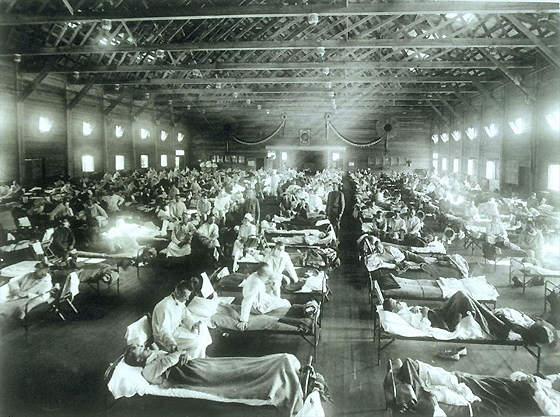
A group of scientists is pushing to publish research about how they created a man-made flu virus that could potentially wipe out civilization.
The deadly virus is a genetically tweaked version of the H5N1 bird flu strain, but is far more infectious and could pass easily between millions of people at a time.
The research has caused a storm of controversy and divided scientists, with some saying it should never have been carried out.
The current strain of H5N1 has only killed 500 people and is not contagious enough to cause a global pandemic.
But there are fears the modified virus is so dangerous it could be used for bio-warfare, if it falls into the wrong hands.
Virologist Ron Fouchier of the Erasmus Medical Centre in the Netherlands lead a team of scientists who discovered that a mere five mutations to the avian virus was sufficient to make it spread far more easily.
Read more: http://www.dailymail.co.uk/sciencetech/article-2066624/Anthr…z1f4YLcKcp








The unethical nature of some scientific activities is not something that ended with Nazi experiments. To modify a deadly virus so that it becomes hyper-infectious and can destroy millions is a criminal, terrorist activity. Such research reveals the dark side of science: its capacity for causing immense harm when unconstrained by any ethical control or respect for the priority of public safety — the Precautionary Principle.
In his book “Our Final Hour,” Cambridge astrophysicist Sir Martin Rees wrote, “The obverse of technology’s immense prospects is an escalating variety of potential disasters, not just from malevolent intent but from innocent inadvertence as well. We can conceive of events — albeit unlikely ones — that could cause worldwide epidemics of fatal diseases to which there is no antidote…” (p. 116).
However, a potential antidote to the H5N1 avian flu virus may have been found in research showing that vitamin A can moderate the over-production of TNF-a and other inflammatory cytokines, which the virus induces in what appears to be its lethal mechanism. See: http://www.scienceguardian.com/blog/alert-vitamin-a-is-proba…-shows.htm
The passage by Prof. Rees also pointed out that “physics could be dangerous too. Some experiments are designed to generate conditions more extreme than ever occur naturally. Nobody then knows exactly what will happen,”
The Large Hadron Collider at CERN is currently engaged in colliding lead nuclei in an experiment that its own scientists admit may generate strangelets (see HeavyIonAlert.org). According to Dr. Rees, a “strangelet disaster could transform the entire planet Earth into an inert hyperdense sphere about 100 metres across” (Ib. p. 120–121). He concluded, “We cannot be absolutely sure that strangelets couldn’t lead to a runaway disaster” (p. 125).
Thanks for the article Eric.
I am sorry to see the hadron collider idiocy is bleeding over into articles that actually are worthy to be posted here.
I mentioned the LHC in this context because its lead ion experiments, which CERN scientists say may generate strangelets, are now underway (til Dec. 14) and are another example of ethically questionable experiments, such as the concurrent virus research in the Netherlands.
Cambridge astrophysicist Martin Rees raised the issue of collider dangers in the same context, when discussing “fatal diseases” as a potential consequence of technology (Rees, Our Final Hour, p. 116). He used both as examples of disasters capable of “destroying civilization,” which led him to pose a basic question: “Should we forgo some kinds of experiments…?” ( p. 117)